- B2B vs B2C eCommerce — What’s the Difference?
- What’s the difference between B2B and B2C ecommerce?
- Do B2C and B2B ecommerce have any similarities?
- Why is B2B ecommerce more complex than B2C ecommerce?
- Tips to improve your B2B e-commerce platform and provide a B2C-level experiences
- B2B and B2C Marketing Funnels
- B2B and B2C eCommerce Sales Funnels
- B2C eCommerce Sales Funnel Stages:
- Trends for B2B and B2C ecommerce
- Final Thoughts on B2B vs B2C eCommerce Marketing
- FAQs about B2B vs B2C eCommerce
B2B vs B2C eCommerce—Differences, Marketing & Sales Funnels [+ Examples]
![B2B vs B2C eCommerce—Differences, Marketing & Sales Funnels [+ Examples]](http://gempages.net/cdn/shop/articles/thumb_b2b_vs_b2c_ecommerce_1024x1024.png?v=1756455021)
Different business models need different marketing strategies.
Why? Mainly because their target customers are different and they may also go through a different customer journey when interacting with brands.
Business-to-business (B2B) and business-to-consumer (B2C) are two rapidly growing business models in the eCommerce space — the former sells products and services to businesses and the latter to consumers.
Thus, entrepreneurs must understand how both these models work and how differently they should approach marketing for each.
In this blog post, we’ll explain everything about B2B vs B2C eCommerce — their meanings, differences, marketing funnel, and sales funnel strategies.
B2B vs B2C eCommerce — What’s the Difference?
Now, let’s understand the basics of both of these models in detail:
What is B2B eCommerce?
B2B eCommerce is an online business model where a business sells its products or services to other businesses — meaning transactions take place between manufacturers, vendors, agencies, wholesalers, retailers, and other businesses or even organizations in general.
For example, Efashion Paris is a B2B eCommerce marketplace and wholesaler that allows business buyers (retailers) to purchase men's and women's fashion products in bulk quantities — and lets wholesalers sell their products too.
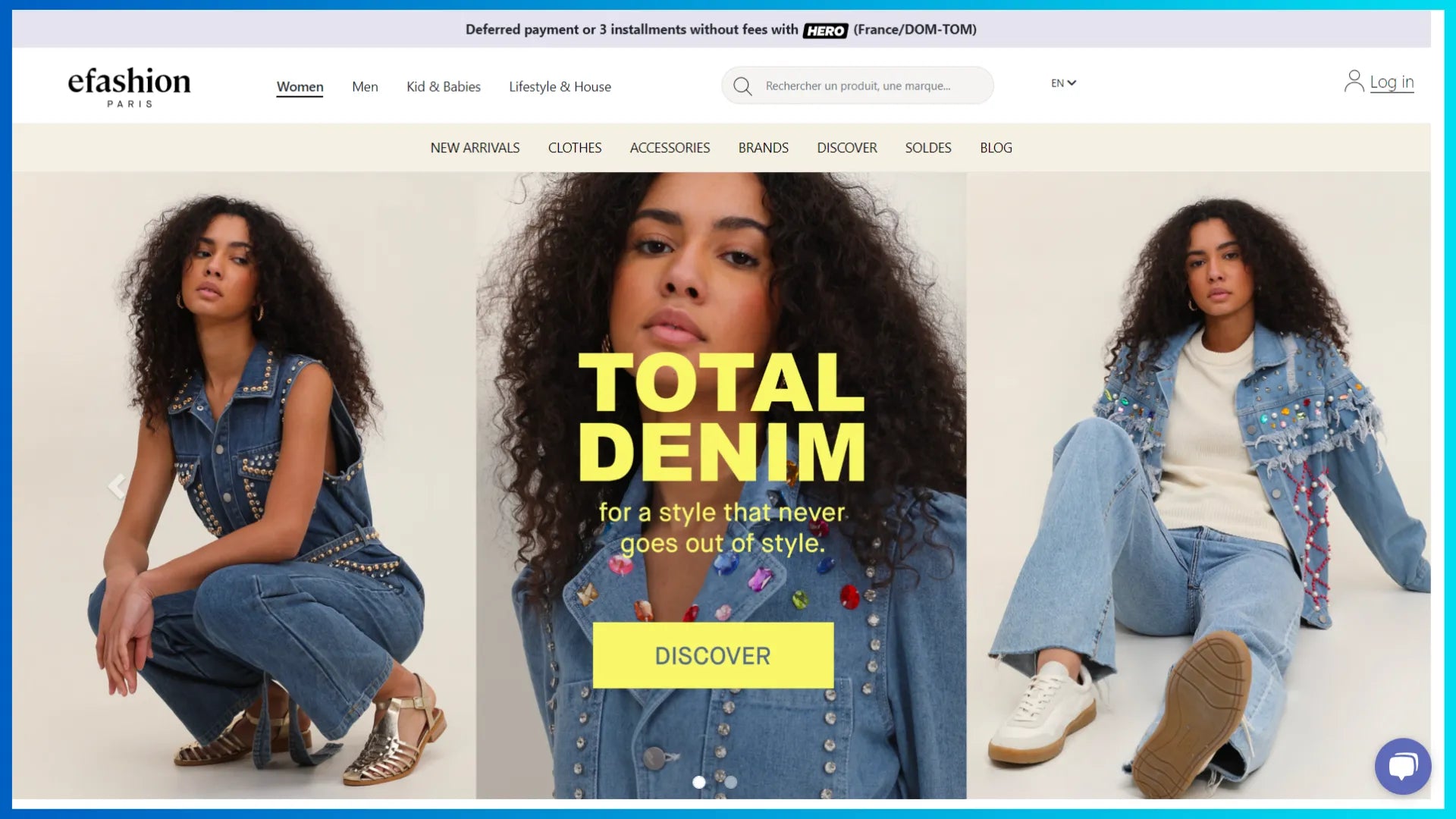
Another big example — Alibaba.com is one of the most popular B2B eCommerce marketplaces in the world — especially a favorite marketplace of eCommerce entrepreneurs looking to source products for dropshipping and selling private label products.
According to the report by Digital eCommerce 360, in 2023, B2B eCommerce sales increased by 17% and reached over $2 trillion in sales.
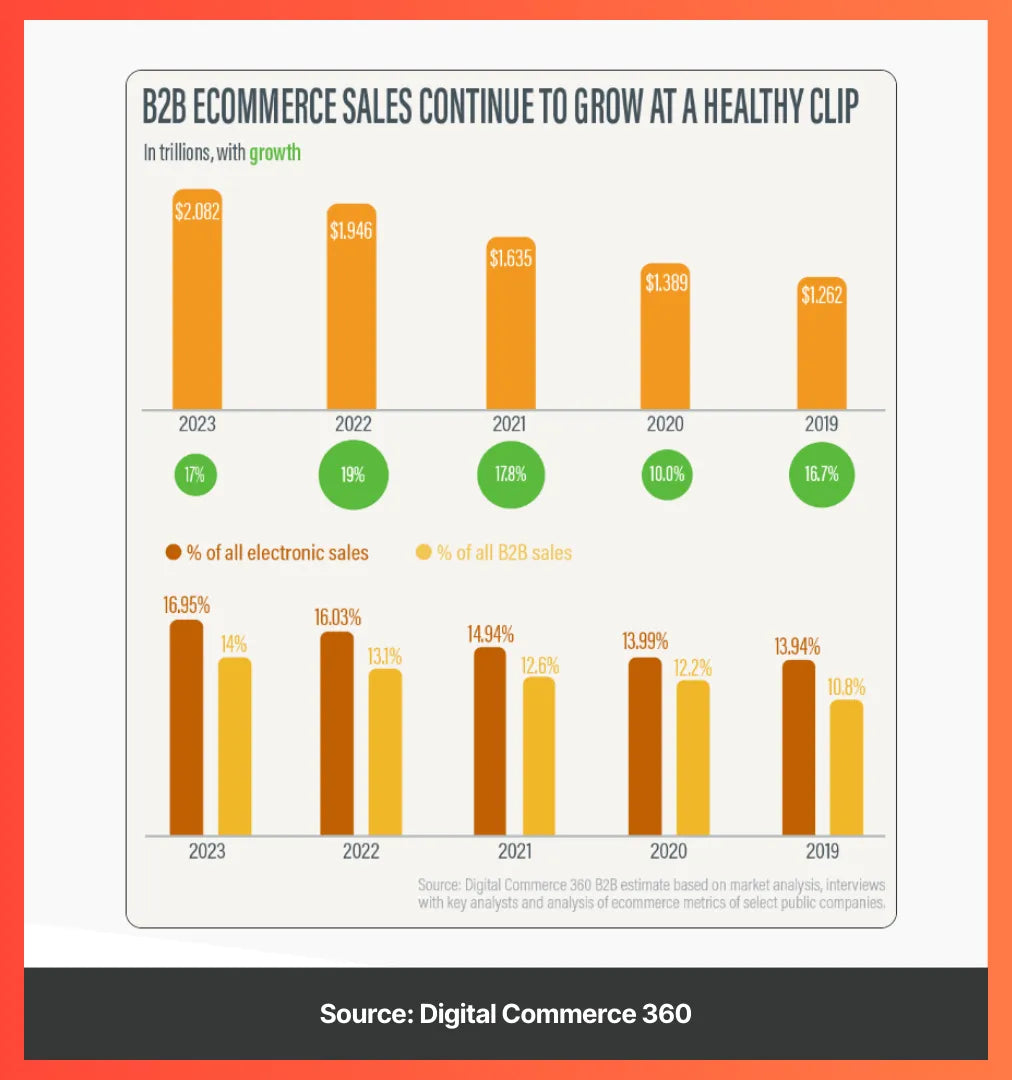
What is B2C eCommerce?
B2C eCommerce is an umbrella term for a business model that covers multiple sub-business-models within its broad scope such as direct-to-consumer (D2C), dropshipping, subscription-based model, and marketplace model.
But first, let’s understand the concept as a whole:
B2C eCommerce is an online business model where a business sells its products or services to its end consumers — with or without the help of other third-party suppliers — depending on the specific type of sub-business-model within B2C eCommerce.
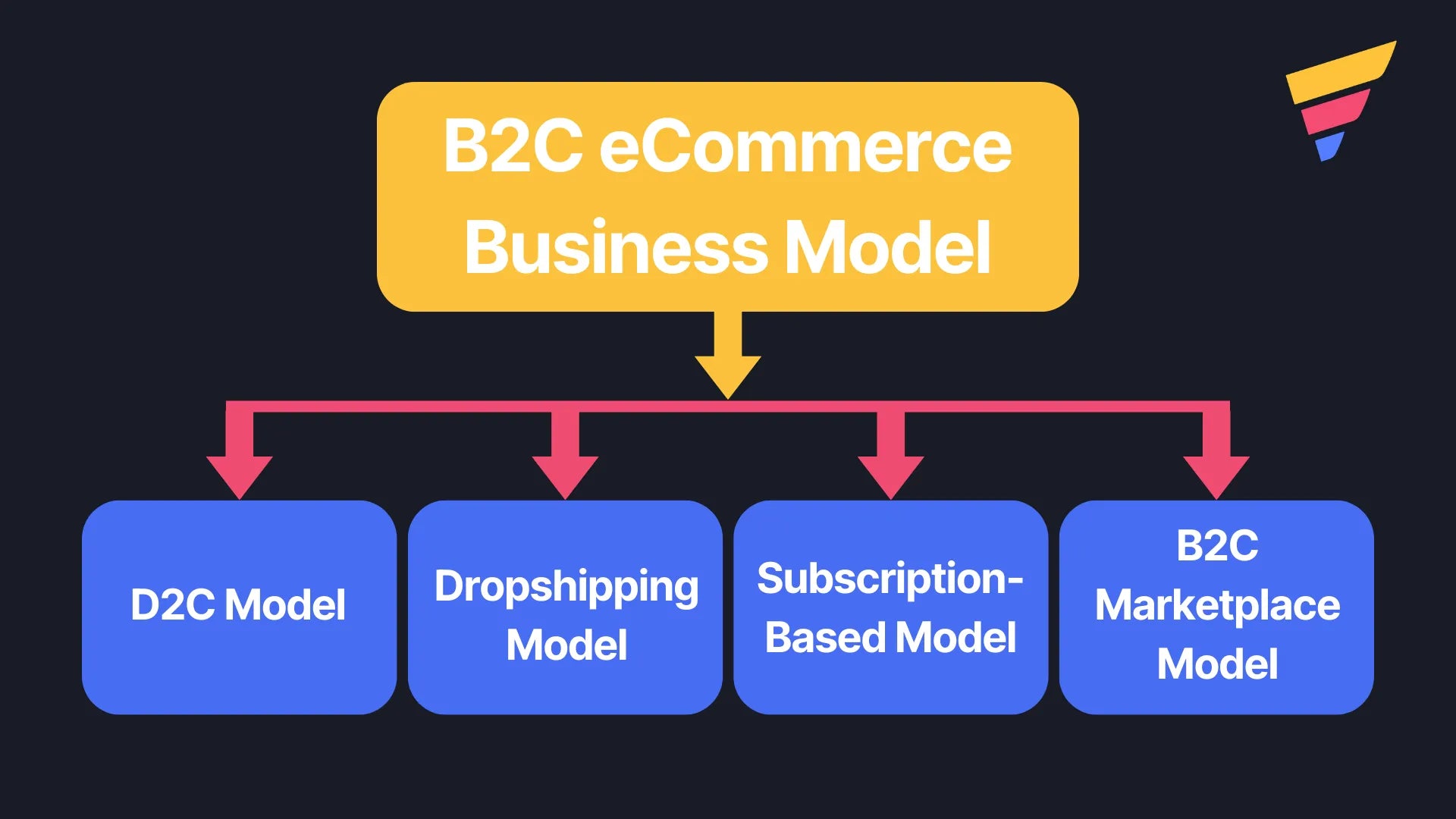
Now, let’s understand these sub-business-models within the broad umbrella of B2C eCommerce:
- D2C Model: D2C (also referred to as DTC) is a business model where a business sells its products or services directly to the end consumer without any intermediaries like wholesalers or retailers.
- Examples: Clothing brands like Gymshark, Fashion Nova, and Bombas.
- Learn more: 10 Best Shopify Clothing Stores
- Dropshipping Model: In the dropshipping business model, a business owner sells products directly to the end consumers but the key difference is that these products are sourced from third-party suppliers.
- Examples: Brands like Fresh Juice Blender, Notebook Therapy, WaveBeamPro, and SaberMasters.
- Learn more: 11 Top Shopify Dropshipping Stores
- Subscription-Based Model: The subscription-based business model aims at selling products that are frequently used by customers, and thus, the business can repeatedly sell these products with different subscription offers such as daily/weekly/monthly subscriptions.
- Examples: Brands such as Blue Apron, HelloFresh, Dollar Shave Club, and IPSY offer subscriptions for different types of products.
- B2C Marketplace Model: The B2C eCommerce marketplace allows different sellers or business owners to list their products on their marketplace, and then, those products are sold by the marketplace to consumers.
- Examples: Amazon.com and Etsy are the biggest examples of this business model.

What’s the difference between B2B and B2C ecommerce?
As we’ve already seen, both business models are significantly different.
But sometimes, people might argue that ultimately you’re selling to “humans”. So, shouldn’t you treat the marketing in the same manner?
The short answer is NO. Why? Although you’re selling to “humans”, several factors make them behave and act differently due to the difference in the nature of transactions in each model.
Below are the key factors that differentiate the marketing strategies in both of these business models:
1. Breadth of audience:
This is the most crucial factor as all the brand messaging and marketing material is designed and created around this factor.
Since B2B eCommerce sells products or services to businesses, their ideal customers are business owners or managers (at businesses or organizations) who are looking for products/materials to sell or solve other business problems.
B2C, on the other hand, focuses on the needs of individual consumers. Now, they could also be business owners or professionals, but B2C brands aim to fulfill their personal needs related to lifestyle, entertainment, health, etc.
2. Method of Buying:
Customers in B2B eCommerce may have complex buying processes involving multiple people in the decision-making and financial processes. Whereas B2C customers make buying decisions on their own and pay by themselves too.
This factor also impacts the complete cycle of the marketing or sales funnel. The B2B eCommerce sales cycle is much longer as compared to B2C sales cycle.
3. Thought Process:
Since both audiences are different, obviously, their thought processes behind making a buying decision are also different.
B2B eCommerce customers typically make buying decisions based on their business needs and logic. Whereas B2C customers typically make purchases for lifestyle improvements, and many times, they buy things based on emotions or feelings as well.
This factor impacts the kind of copy and content you create for marketing purposes. For example, B2B content and copy require much more data and statistics, whereas B2C emphasizes touching their customers’ emotions through content and copy.
Also, you may see many B2C brands (online stores) promoting and placing certain products for “impulse buying”. That doesn’t happen in B2B.
Learn more: Best Content Marketing Ideas for B2B and Examples to Drive Success
4. Pricing & Types of Deals:
B2B eCommerce deals are typically bigger in the order value considering the quantity of items sold in a transaction. For example, a retailer might purchase goods worth $10,000 in a single transaction from the manufacturer or wholesaler.
B2C, on the other hand, are relatively smaller deals. For example, an online store selling beauty and makeup items may have an average order value of around $100-$200.
Also, B2B eCommerce pricing structures could be complex and may involve human intervention in negotiations before closing the deal. B2C eCommerce pricing structures are pretty straightforward and do not involve negotiations.
5. Website Design:
Although the website design fundamentals remain the same, there could be some subtle differences in their website designs as well.
B2B eCommerce websites focus on providing detailed product information, comparison tables, and use different CTAs. B2C eCommerce websites focus on providing great product visuals and highlight how the products look in real life.
Most B2B eCommerce websites have a live chat option to connect customers with the sales team to optimize conversions. Whereas B2C brands usually have chatbots to answer basic or frequently asked questions.
Pro tip: When it comes to designing a website for B2C eCommerce brands, Shopify’s powerful eCommerce platform and GemPages’ advanced design features could help you create a stunning website. Also, GemPages has an extensive library of professionally designed templates to help you get started in no time.
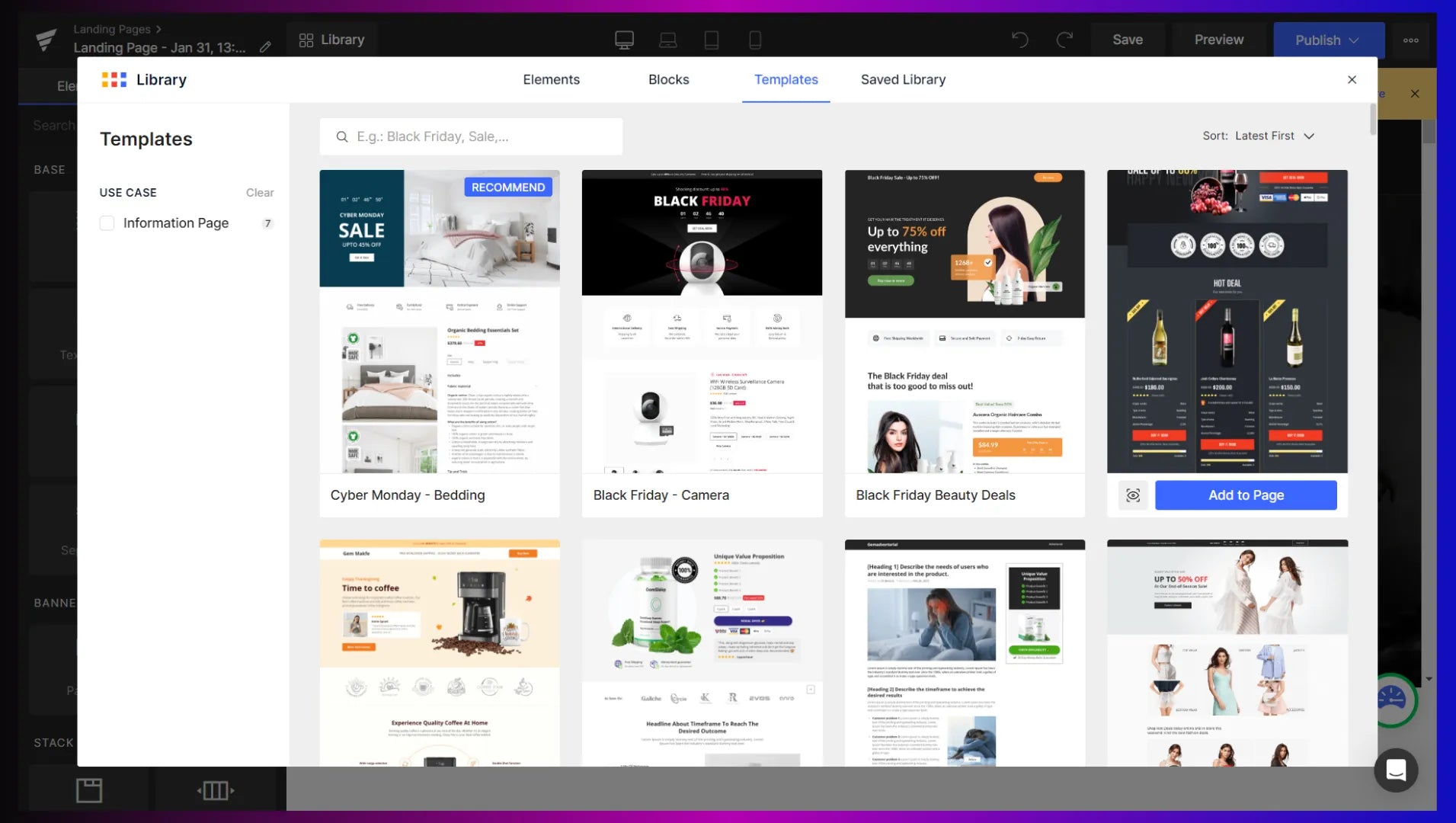
6. Branding:
B2B eCommerce branding is focused on entrepreneurs and professionals, and thus, typically adopts sophisticated and minimalist branding.
B2C eCommerce branding is prepared for individuals or targeting a certain group of people (niche). And that’s why, the branding has a lot of novelty and they might even go with funky and vibrant branding.
7. Marketing:
Marketing to businesses (B2B) and consumers (B2C) operates on different principles, even in the digital world. The main goal of B2B marketing is to create lasting relationships and demonstrate value over time. For businesses using Shopify, their B2B ecommerce platform can significantly impact their marketing success, with some brands seeing up to a 50% increase in repeat orders.
In contrast, B2C marketing is faster and reaches a wider audience. The rapid pace of consumer marketing is highlighted by the success of Shopify's Shop Campaigns in 2023, which helped brands gain more than a million new customers. Many of these brands saw their first sale within 48 hours, showing the quick conversion typical of B2C.
Learn more: 11 Best B2C Landing Page Design Examples in 2025
Other key differences between these marketing approaches include:
-
Investment and ROI: B2B marketing often requires a larger initial investment but results in long-term customer relationships. B2C marketing, on the other hand, involves smaller upfront costs but needs continuous effort to attract new customers.
-
Content: B2B content is usually more technical and solution-oriented, while B2C content focuses on lifestyle and emotional appeal.
-
Sales Cycle: B2B sales cycles are typically longer, involving multiple interactions and decision-makers. B2C sales are generally quicker and more direct.
Do B2C and B2B ecommerce have any similarities?
Although business-to-business (B2B) and business-to-consumer (B2C) e-commerce have many differences, they also share key similarities.
The buying experience is becoming more similar
Both B2B and B2C buyers now expect a modern, consumer-like experience. In fact, roughly 87% of B2B buyers are willing to switch suppliers or even pay more for a better online buying process. This shows that B2B is no longer just about the product or price, but about providing a seamless digital experience.
Both B2B and B2C customers now value:
-
Self-service: The ability to place orders themselves online.
-
Simple ordering: Quick and easy reordering that feels similar to a consumer checkout.
-
Personalized content: Tailored pricing, product catalogs, and content that meets their specific needs.
-
Consistent brand experience: A smooth, unified experience across all channels.
-
User-friendly design: A clean, intuitive interface that makes even complex tasks simple.
Just as B2C has become largely digital, B2B is following suit, with projections showing that 80% of all B2B sales will happen online by 2025. This means B2B sellers must offer the same polished, efficient experiences that B2C buyers have come to expect.
Multichannel Matter
Both B2C and B2B buyers use the same digital channels, such as YouTube for tutorials and platforms like Twitter, LinkedIn, and Facebook for social engagement. A business executive might use Facebook to share family photos, just as a college student would use it to connect with classmates. The purpose may differ, but the audience is on the same platforms.
According to a Forrester study, 59% of buyers prefer to research online rather than talk to a salesperson, often because they feel salespeople prioritize their own agendas. This highlights that both B2B and B2C buyers are active researchers who use multiple channels. B2B businesses that use platforms like Facebook or Instagram, which their competitors might ignore, can gain a competitive edge with cheaper reach and less competition.
People are people
A major misconception is that B2B buyers are fundamentally different from B2C buyers. Whether they're a student or a CEO, they are still human. All people are driven by the same emotions and psychology.
B2B marketers have a great opportunity to use psychological principles to connect with their audience. This includes focusing on the benefits of a product rather than just its features and understanding the role that emotions, like fear, can play in a buyer's decision-making process.
Why is B2B ecommerce more complex than B2C ecommerce?
B2B (business-to-business) e-commerce is more complex than B2C (business-to-consumer) for several key reasons related to the nature of the buyers and their purchasing process.
Complex Buying Process
Unlike B2C customers who typically make personal, often impulsive or emotional purchases, B2B buyers operate within a more structured environment. They often need to consult with multiple departments and stakeholders before making a decision. This means the sales cycle is longer, with more time dedicated to research and gathering recommendations to ensure the purchase aligns with company goals.
Higher Stakes and Long-Term Relationships
B2B transactions are often for high-value purchases, which means a mistake can have significant consequences for the company. This heightened risk leads to a more cautious and thorough buying process. Additionally, B2B relationships are built for the long term, often involving repeat purchases and a consideration for the entire buyer lifecycle, whereas B2C customers are more likely to be one-time purchasers.
Tighter Constraints
B2B buyers have tighter constraints and a specific mandate from their organization, as they are making decisions on behalf of the entire company. In contrast, B2C customers have more freedom and flexibility in their choices.
Tips to improve your B2B e-commerce platform and provide a B2C-level experiences
Although B2B e-commerce is more complex, B2B buyers now expect the same high level of service as B2C consumers. Providing a personalized and seamless experience is crucial for building strong relationships and standing out from competitors. According to Salesforce, 72% of business buyers expect vendors to offer personalized engagement.
Here are some strategies for improving your B2B e-commerce platform to meet these expectations:
-
Create a Seamless Omnichannel Experience: Today's business buyers, like B2C consumers, expect a consistent experience across all platforms. A Forrester report found that 75% of buyers want connected processes, and nearly 70% expect an "Amazon-like" experience. An omnichannel approach benefits both the buyer, who can interact with you on any channel, and your business, which gains valuable customer data.
-
Offer 24/7 Customer Support: Because B2B transactions are often large and complex, robust customer support is essential. Consider using chatbots to provide around-the-clock assistance. Additionally, since B2B buyers often conduct extensive research before contacting you, a comprehensive FAQ section can answer their common questions proactively.
-
Streamline the Checkout Process: While B2B buyers value speaking with a representative during their initial research, a McKinsey report notes that only 15% want to speak to someone when reordering. To improve customer satisfaction, make it easy for them to reorder on their own, for example, by offering one-click reordering or recurring subscriptions.
-
Provide Detailed and Informative Content: B2B purchasing decisions are based on logic and data, not emotion. Therefore, it's vital to provide detailed information about your products and services through resources like FAQs, community forums, video demonstrations, and live chat. B2B buyers also expect sales representatives to have a deep understanding of their industry and be prepared to answer complex questions.
B2B and B2C Marketing Funnels
We’ll cover both the marketing funnel and sales funnel for B2B and B2C eCommerce brands.
[In case you’d like to learn about the difference between marketing and sales funnels, you can check out this article: Marketing Funnel vs Sales Funnel: The Complete Guide]
All of the funnels are basically prepared on the foundation of the AIDA model which has four stages — Awareness, Interest, Desire, and Action — to convert potential buyers into paying buyers.
So, when talking of B2B and B2C marketing funnels, they are almost identical in the core concept but yet different in certain aspects at stage levels.
The key differences in these marketing funnels are the emphasis on certain stages and the types of content used during those stages.
Let’s take a look at the B2B and B2C marketing funnels to see how they are different and what are the common factors:
Marketing Funnel Stages |
B2B eCommerce Marketing Funnel |
B2C eCommerce Marketing Funnel |
|
Awareness |
> This is where the funnel starts with an aim to make customers aware of the brand/products/services. > B2B brands try to attract potential customers who are looking for business solutions. |
> B2C brands aim to make customers aware of what lifestyle improvements and other benefits are offered by their products. |
|
The common factor: Both B2B and B2C brands can use the following channels to raise awareness: content marketing, social media marketing, search engine optimization, paid ads, public relations (PR), etc. |
||
|
Interest |
> Once customers land on a B2B website, the brand tries to capture their attention and evoke interest. To do so, B2B brands may offer free downloadable resources to capture the email or other contact information of their website visitors. |
> One of the most common techniques used by B2C eCommerce brands to capture emails or contact information is to offer a discount code through a popup form. |
|
Common factor: For both B2B and B2C eCommerce brands, email marketing is one of the most crucial factors for lead nurturing. So, although both may use different tactics, the ultimate goal is to get the customers’ emails to move them further in the marketing funnel. |
||
|
Desire |
> At this stage, brands help customers visualize the benefits of their products with a high intent of conversion. > B2B brands may also offer product or service demos to convince the customers. > Another important factor is social proof. Most B2B brands present testimonials and success stories of their existing customers and showcase ratings and reviews from third-party sites too. |
> Once again, the discount is one of the biggest weapons for B2C eCommerce brands to evoke the desire to complete the purchase. > B2C brands usually display user-generated content to present their products and use customer reviews through photos and videos. |
|
Common factor: Landing pages — whether it’s a B2B or B2C eCommerce brand, landing pages play a crucial role in their marketing and sales funnels. |
||
|
Action |
> Now, the customer is in the final stage of the marketing funnel where the customer purchases your product or service. > You may notice a difference in their payment options. B2B brands may use payment options like bank or wire transfer which are not usual in B2C eCommerce. |
> One more key difference here would be the upselling and cross-selling strategies. Although upselling and cross-selling could be done in B2B as well, those customers are less likely to get into it. Whereas B2C customers tend to buy such products more often because they are not big in amount. |
|
Common factor: Whether you’re a B2B or B2C brand, you love repeat purchases from your customers. Thus, retention strategies are important to be implemented at this stage in both marketing funnels. |
||
B2B and B2C eCommerce Sales Funnels
Marketing funnels are like preparing your overall marketing strategy, whereas sales funnels go into the deeper level and involve creating digital assets or content for each stage.
While we discussed that the marketing funnels for B2B and B2C brands may not have a significant difference, it won’t be the case with the sales funnels. B2B and B2C eCommerce sales funnels have some important differences, especially in content types and strategies.
Since we’ve already discussed some of the fundamentals of the AIDA model, we’ll briefly cover these points specific to these business models:
B2B eCommerce Sales Funnel Stages:
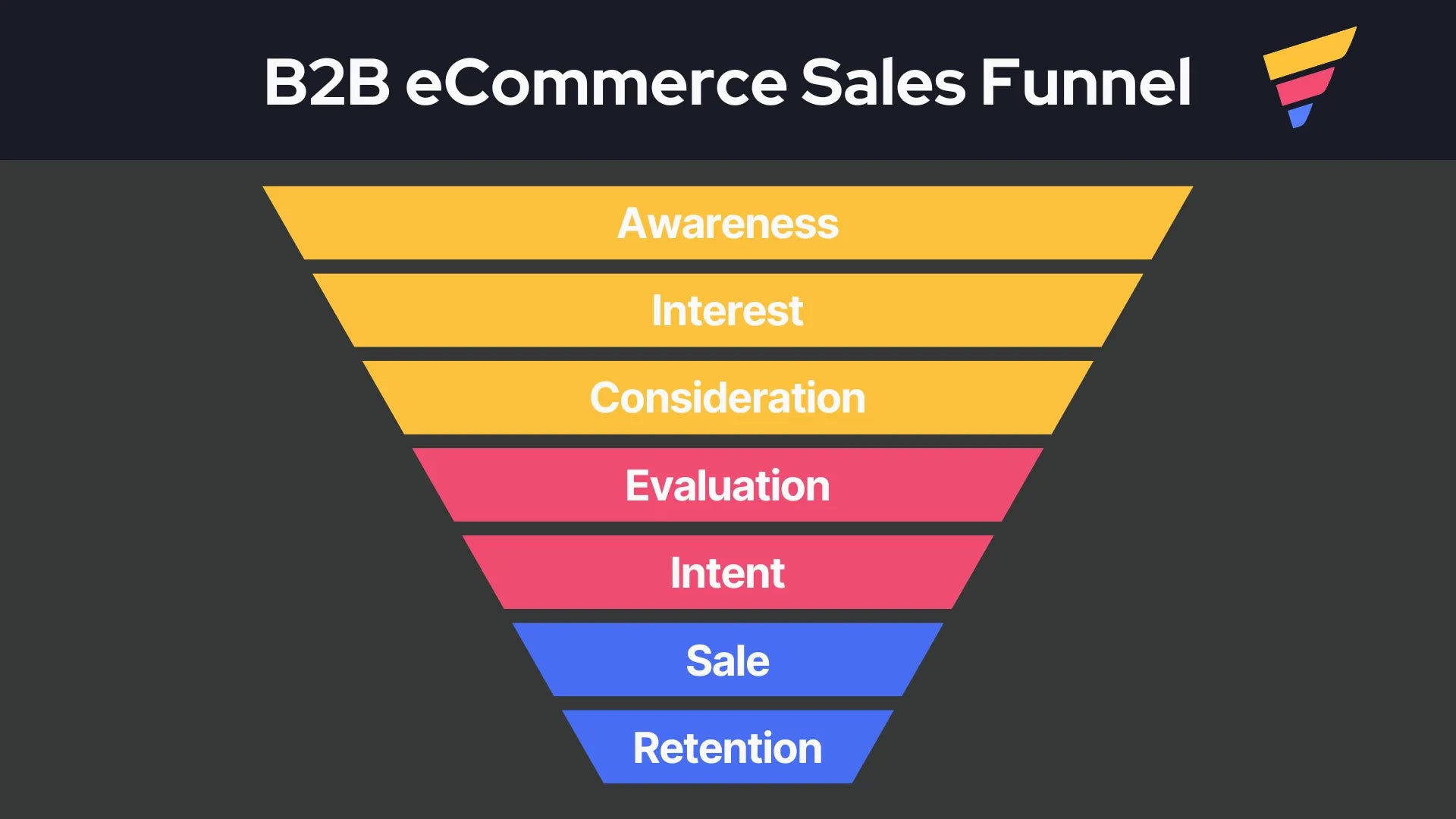
-
Awareness
For B2B brands, content marketing plays a crucial role in bringing traffic and raising awareness of the brand. It also helps them share their valuable insights on complex topics.
-
Interest
Freebies such as eBooks and whitepapers are great ways to build interest. Also, it helps move customers to the next stage of the sales funnel by collecting the emails or other contact information during the signup.
-
Consideration
B2B customers prefer to shortlist multiple options before considering one option. They might even ask for quotes from multiple brands before going into further evaluation.
-
Evaluation
During the evaluation stage, B2B customers focus on the detailed pros and cons of choosing one solution that meets their business requirements. Many B2B brands use case studies and comparison articles to highlight how their product could be the right choice for customers.
-
Intent
After completing the evaluation, a customer may still want to test things out.
So, in this stage, the customers show a clear indication that they’re almost ready to make a purchase. For example, they may reach out to your sales team, book a demo call, or order samples — all these are good indications that the customer is in the intent stage.
-
Sale
Now comes the important stage! After finalizing the deal and its terms, the final purchase is made.
-
Retention
The retention (also referred to as “loyalty”) stage applies pretty much similarly in both B2B as well as B2C sales funnels.
That said, in some cases where B2B customers purchase in bulk quantity, the retention strategy may not be a heavily focused part of their sales funnel. For replenishable items, B2B brands may run marketing campaigns at regular intervals.
Learn more: 10 B2B Marketing Campaign Ideas You Should Never Miss in 2025

B2C eCommerce Sales Funnel Stages:

-
Awareness
B2C brands tend to get a more engaged audience because their customers are mostly individuals. Thus, traffic is mainly driven through social media posts. Also, B2C brands run ads on social media platforms like Facebook, Instagram, Snapchat, TikTok, etc.
-
Interest
Website copy and product images are important elements to spark an interest. Since B2C eCommerce customers shop online, they love to see how the product looks in real life. And that’s why, uploading lifestyle images on your online store helps your customers and it keeps them interested in your products.
-
Evaluation
The evaluation stage may not be applicable in all cases but might come into the picture when selling high-ticket items. During this stage, newsletter/email marketing plays a crucial role in lead nurturing.
-
Desire
B2C customers don’t just buy with their minds but also with their hearts. To evoke the desire to purchase a product, B2C brands mainly focus on emotions rather than simple stats and logic. Also, designing a compelling landing page gives a great opportunity to enhance the conversion.
-
Sale
Once the customer has finalized the brand and its products, the customer completes the transaction. B2C brands have more opportunities to upsell or cross-sell products.
-
Retention
B2C brands are relatively more focused on retention strategies through email and SMS marketing. Also, since B2C customers purchase in small quantities, they are more likely to make frequent repeat purchases as compared to B2B customers.
How to Build An eCommerce Sales Funnel Strategy [+ Examples]
Choose the Best Sales Funnel Builder & Software: The Complete Guide
Here are some key differences in B2B and B2C eCommerce sales funnels:
|
# |
Differentiator |
B2B eCommerce Sales Funnel |
B2C eCommerce Sales Funnel |
|
1 |
Target Audience |
Business owners and managers at businesses or organizations. |
Individuals, couples, and specific groups of individuals. |
|
2 |
Marketing Channels and Platforms |
Mostly focuses on content marketing through blog content and YouTube and social media marketing using platforms like LinkedIn & X. |
Mostly focuses on social media marketing using platforms like Facebook, Instagram, Pinterest, TikTok, Snapchat, and X. |
|
3 |
Duration of Sales Funnel |
Long |
Short |
|
4 |
Stages of the Funnel |
It can go up to 7 Stages. It involves an “intent” stage where the customers may reach out to the sales team or show purchase intent through demo requests. |
It can go up to 6 Stages — the “intent” stage may not come into the picture. |
|
5 |
Evaluation Stage |
Case studies and third-party review platforms (like Trustpilot) play a crucial role here. |
Social proof in the form of customer reviews is good enough. |
Keep in mind — all of these aspects are not like thumb rules. There could be exceptions where strategies may overlap or be used counterintuitively. For example, an automobile brand is a B2C business. But you’ll need to consider the intent stage in that case when customers book a test drive.
Trends for B2B and B2C ecommerce
E-commerce is seeing major shifts in both B2B and B2C sectors. Here are some of the key trends:
Replacing omnichannel models with unified commerce
Businesses are replacing complex, separate systems (like one for online sales and another for in-store) with a single, unified platform that manages all sales, operations, and data. This "unified commerce" approach, exemplified by platforms like Shopify, brings all business functions together, giving a single source of truth for product, order, and customer information. This highlights that while many people ask, "is shopify b2b or b2c", the answer is that it's designed to handle both. Shopify allows businesses to manage wholesale and direct-to-consumer sales from a single system, leading to significant benefits, including:
-
Cost savings: Up to a 60% reduction in technical maintenance.
-
Faster implementation: Projects can be completed 20% faster.
-
Increased efficiency: One retailer, Oak + Fort, saved 180 hours per week by unifying their systems.
-
Higher revenue: Businesses see an average increase of 8.9% in gross merchandise volume (GMV).
Ultimately, unified commerce not only improves efficiency but also creates a seamless customer experience across all channels, whether they are shopping online, in a physical store, or through a B2B portal.
The Rise of First-Party Data and Personalization
With new regulations and privacy laws, the old method of relying on third-party cookies for customer data is becoming obsolete. Instead, high-growth companies are focusing on collecting and using "first-party data"—information they gather directly from their customers, such as purchase history and browsing behavior.
This shift is driving the creation of truly personalized online stores. Businesses are using this data to:
-
Encourage customers to sign in to their accounts.
-
Offer self-service options.
-
Provide personalized product recommendations.
-
Save customer preferences and carts.
-
Highlight custom discounts.
This trend is changing personalization from a form of surveillance to a valuable service, building stronger, trust-based relationships with customers.
Evolving Customer Acquisition and Retention
The way businesses acquire and keep customers is also changing. While paid advertising was once the main strategy, brands are now diversifying their efforts to find customers who offer a higher average order value, better profit margins, and greater long-term value.
New strategies beyond traditional advertising include:
-
Collaborating with other brands.
-
Partnering with influencers.
-
Participating in data cooperatives where merchants can share anonymized insights to lower acquisition costs.
-
Launching customer referral programs.
-
Forming retail partnerships.
Additionally, businesses are no longer treating customer acquisition and retention as separate activities. They are designing a connected customer journey, from initial discovery to post-purchase, with personalized experiences and self-service options.
Increased Access to Data
The traditional advantage held by large retailers, access to vast amounts of customer data, is being challenged by new models like data cooperatives. These platforms allow independent merchants to combine their data (while keeping customer identities private) to gain collective insights that can be as powerful as those of larger corporations. This collaborative approach can reduce customer acquisition costs by as much as 50%.
Final Thoughts on B2B vs B2C eCommerce Marketing
Marketing is done by almost every single brand—that’s not a point to debate!
It’s one of the most crucial factors to grow and scale your business. But what’s important to figure out is — how you do marketing to your audience without making it look like marketing.
For that, you need to get into every small detail of your customers, take feedback, and constantly observe and implement strategies.




 Facebook Community
Facebook Community Change Log
Change Log Help Center
Help Center









